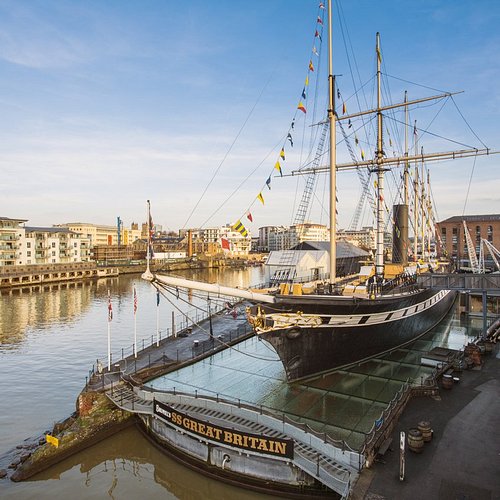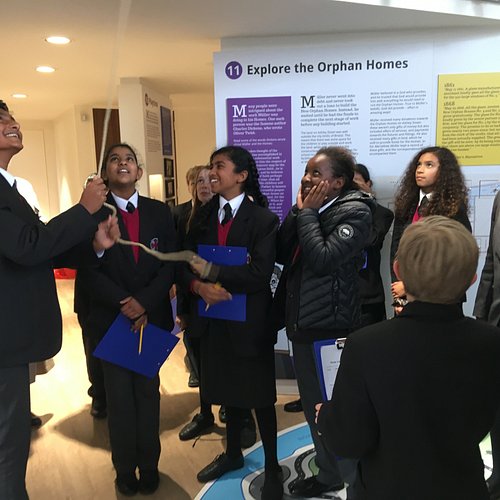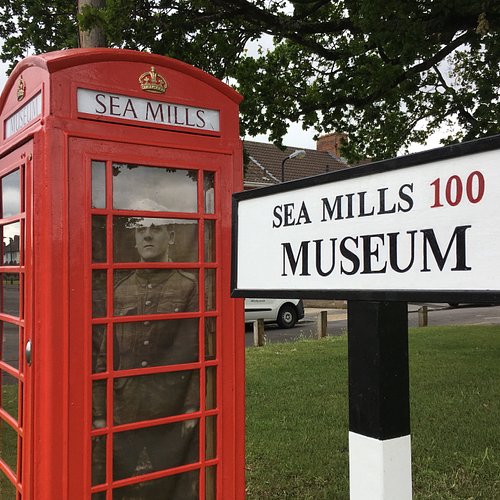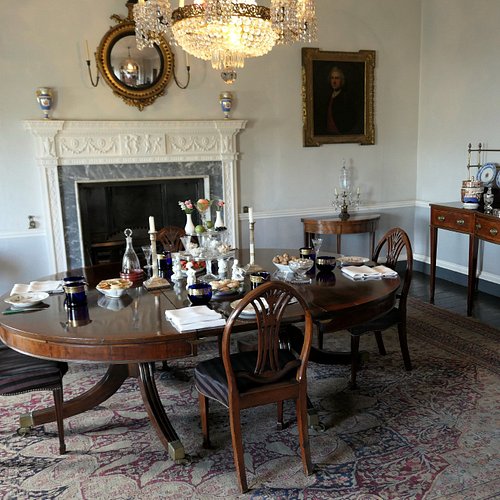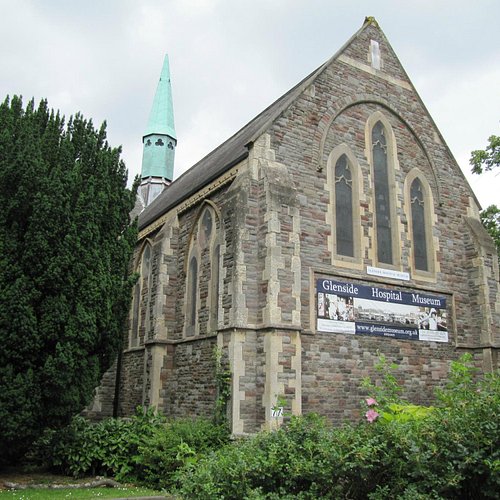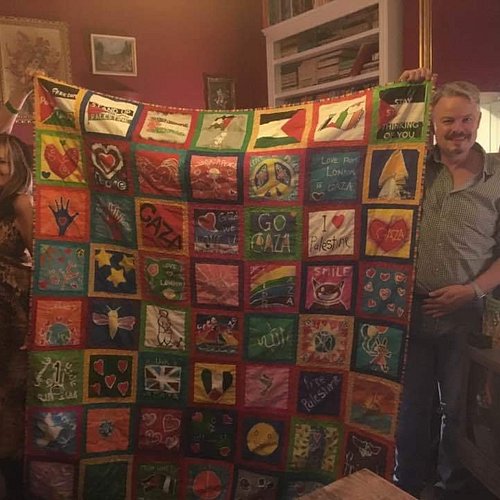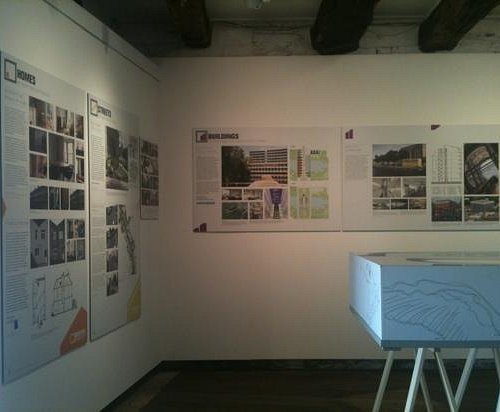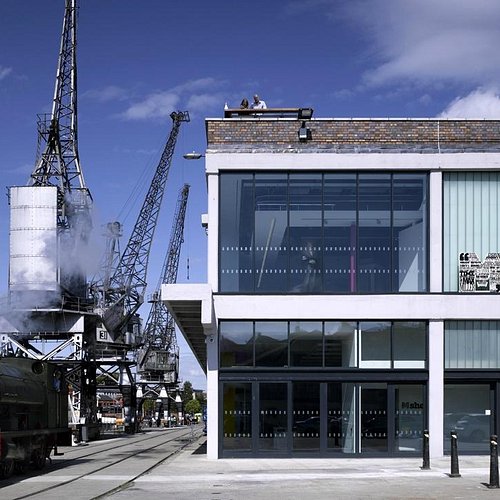Top 10 Specialty Museums in Bristol, England
Bristol is a quirky British city with beautiful hilly vistas and plenty of historic sights to explore. Anyone interested in ships will have a blast aboard Brunel’s SS Great Britain, the world’s first great oceanliner, and the Matthew, a replica of the ship upon which John Cabot sailed to America in the 15th century. The graceful Clifton Suspension Bridge is another must-see.
Restaurants in Bristol
1. Brunel's SS Great Britain
Overall Ratings
5.0 based on 7,791 reviews
Step back in time when you board Brunel’s SS Great Britain. Discover the true stories behind the ship that changed the world. Experience the sights, sounds and smells of life on board for Victorian passengers and crew. Descend under water below the glass ‘sea’ to touch the world’s first great ocean liner.
Reviewed By asthomo - York, United Kingdom
Definitely a must visit to anyone very interesting indeed There’s a museum first then onto the ship see the first class / other class, kitchen, engine room You can also go up the mast for a extra £10, then finishes of go into the dry dock itself. If you book your tickets online you get 5% discount But I recommend this to anyone
2. The George Muller Museum
Overall Ratings
5.0 based on 4 reviews
WE ARE TEMPORARILY CLOSED IN LINE WITH GOVERNMENT GUIDANCE. We are the proud recipients of Visit Britain’s ‘Good to Go’ badge and have put all necessary measures in place to ensure a safe and enjoyable visit once we reopen. When we do, ALL VISITS MUST BE BOOKED IN ADVANCE. Our usual opening hours are: Tues 10 - 4, Wed 10 - 4, Thurs 10 - 12, Fri 10 -4. For more info visit website. Our museum tells the incredible story of George Muller who provided a home and an education for over 10,000 orphans during his lifetime. Our new museum is located in one of the original Orphan Homes in Ashley Down, Bristol.
3. Bristol Steampunk Museum
Overall Ratings
5.0 based on 1 reviews
An Art Gallery, Gadget and Gift Shop showcasing local artists absurd whimsical inventions. The Museum embraces a fictional universe steeped in the golden victorian age of scientific exploration and steam power.
4. Sea Mills 100 Museum
Overall Ratings
5.0 based on 5 reviews
Mini-museum in a phone box opened as part of a heritage trail event on 8th June 2019. It celebrates the origins of the Sea Mills estate which surrounds it. The Museum is temporarily closed due to Covid-19 restrictions but much of the contents can still be viewed from outside.
Reviewed By SuzanneD279 - Bristol, United Kingdom
Lovely museum in a phone box with so much history and information. Well worth a visit and great use of an old phone box. Be good to have them all around the city of Bristol
5. John Wesley's Chapel & New Room Museum
Overall Ratings
4.5 based on 309 reviews
The New Room in Bristol is the oldest Methodist Chapel in the world (originally built in 1739 and extended in 1748) and the cradle of the early Methodist movement. It was built and used by John and Charles Wesley and the early Methodists as a meeting and preaching place and the centre for helping and educating the needy members of the community. The chapel itself is on the ground floor (where there is also a shop) and is accessible from either the Broadmead or Horsefair courtyards. Upstairs, there is an admission charge Arts Council accredited museum which tells the story of John and Charles Wesley and their life and work in Bristol.
Reviewed By Swedishtomcat - Diss, United Kingdom
This historically-religious building, slap bang in the centre of Bristol’s shopping quarter, is where Methodism got its first foothold with a purpose-built chapel in 1739. There are a number of rooms upstairs which have been converted into a museum explaining the history of the Wesley brothers and Methodism. Downstairs is the New Room where you can imagine John Wesley preached. All the volunteers were very friendly especially the lady who was warmed the cockles of our hearts.
6. The Georgian House Museum
Overall Ratings
4.5 based on 236 reviews
Discover what a Bristol sugar plantation and slave owner's home might have looked like around 1790. Eleven rooms spread over four floors reveal what life was like above and below stairs, from the kitchen in the basement where servants prepared meals to the elegant formal rooms above.
Reviewed By 967kblue
As I have mentioned in my previous review of No.1 Royal Crescent, the Georgian history is something I am very fascinated with and when I was coming to Bristol, I was excited to find out that there was a Georgian house museum situated there. It did not disappoint, it is a free attraction but they do like to get donations and the suggested donation is £5 which for what is in this attraction, it is well worth the money. The house is broken up into two parts, Life above stairs for the families who lived in the house and for life below stairs where the staff worked so you get to see the contrasts of how each group lived in the house. Life above stairs has lovely rooms such as dining rooms, bedroom, study and library. Life below stairs shows the kitchen, washroom for clothes, pantry, Housekeeper's room and a room filled with crockery (plates etc). In most of the rooms, there are information cards with tell you more about the rooms. There is a room with information boards about John Pinney, the man the house was built for who was a wealthy slave plantation owner and sugar merchant and talks about the slavery that occurred on his Island and gives insights into some of the people who were slaves on the Island. I am glad that they devoted some attention to this as you realise this is how most houses in that era were funded and how families became wealthy or maintained their wealth. I enjoyed my visit and the staff were very friendly and knowledgeable particularly one who helped me with my new camera. It is well worth a visit.
7. Glenside Hospital Museum
Overall Ratings
4.5 based on 48 reviews
The Museum tells the story of 150 years of psychiatric care through a unique and extraordinary collection of objects, and photographs, creating a vivid picture of life and work in the former hospital. The Museum is situated within the Victorian chapel in the grounds of the building which opened in 1861 as Bristol Lunatic Asylum. It was a psychiatric hospital for many years with over a 1000 patients residing there. In 1994, Glenside Hospital closed. Since the 1880's some form of Nurse Training has been delivered on this site. The Museum has a special First World War exhibition telling the story of the people and place who were there. The Asylum was requisitioned by the War Office and became Beaufort War Hospital from 1915 to 1919 specialising in orthopaedics. The Museum is entirely run by volunteers and is open every Wednesday and Saturday morning from 10.00am-12.30pm. The volunteers will open the museum at other times for groups by appointment. Did you know: The collection was begun by Dr Donal Early, a consultant psychiatrist at the hospital and was first displayed in 1984 on the balcony in the dining room. Did you know: The Asylum used to be self-sufficient, with land, gardens and green houses providing fruit and vegetables. The site used to have a piggery, as well as farming chickens and cows. After 97 years providing food and money for the hospital the pigs were wiped out by swine fever in 1958 and not replaced. The smell and yearly infestation of summer flies departed with them. Did you know: Within the Glenside Campus walls there are over 1000 trees, some 180 different types
Reviewed By llinosevans - Brighton and Hove, United Kingdom
I visited with members of my family - 2 of us had worked as nurses at Glenside hospital in the 1970s/early 1980s and another had nursed at Stoke Park. The organisers have been able to include so much detail and exhibits into a small space. We were met by enthusiastic volunteers who were interested to hear our stories about our time at these hospitals. I would strongly recommend a visit to this museum to those who have an interest in the history of mental health through the ages, equally I think that this is of a great museum to those interested in social history.
8. Palestine Museum and Cultural Centre
Overall Ratings
4.5 based on 62 reviews
Reviewed By bridgetmN5710TR - South Wales, United Kingdom
We discovered the wonderful little cultural centre and museum quite by chance while visiting Bristol a couple of years ago.Weve since been back several times with our grown up children and friends and try to pop in if we are in Bristol.A unique,highly informative museum of Palestine,which gives an accurate,detailed account of the long and complicated history of this land.A great place to visit if you are not so familiar with this often sad history.A written and pictoral account covering the many years.The centre stocks fantastic products from Palestine such as the delicious freekeh,a smokey grain that can be added to soups or stews.Maftool,which is giant couscous.The mejool dates are delicious as is the olive oil.The volunteers here do an amazing job,and are friendly and always happy to answer questions.A must visit for anyone interested in human rights issues and the Palestinian plight.Also a great selection of beautiful artefacts and costumes on display.The museum is free to enter.I try to always give a donation as we are lucky to have su ch a unique informative cultural centre here in the heart of Bristol.Would reccomend!
9. The Architecture Centre
Overall Ratings
4.0 based on 18 reviews
The Architecture Centre champions better buildings and places for people. By demonstrating the value of good design we aim to increase public awareness and enjoyment of the built environment, and stimulate demand for design excellence. The Architecture Centre exists to foster a greater understanding and enjoyment of architecture and to promote the value of a better built environment. We believe that by increasing public awareness and working with those responsible for development, we will help raise expectations and thereby provide both opportunities and demand for better buildings and places. Every aspect of the work undertaken by The Architecture Centre aims to: Widen public awareness Develop understanding and appreciation Demonstrate the value of good design Encourage good practice The Architecture Centre is the leading regional expert on engaging the public with the built environment and championing the creation of better quality neighbourhoods, buildings and public spaces. Based in Bristol and relating directly to that particular urban environment we respond equally to the needs of the wider South West region. The Centre’s programme includes exhibitions, events, lectures and critical debate, work with artists, and visits to inspiring buildings. Our learning programme delivers engaging built environment education to children and young people in the South West. We promote the value of good design - empowering communities undergoing change to shape their environment for the better, and working with built environment professionals, local authority officers and councillors to achieve design excellence. The Centre is based on Bristol’s Harbourside and our gallery is open to the public 5 days a week (we are closed on Mondays and Tuesdays). Please visit our website for more information on opening times and current exhibition and events programme.
10. M Shed
Overall Ratings
4.0 based on 1,791 reviews
See amazing film and photographs, listen to moving personal stories, encounter rare and quirky objects and add your own memories of Bristol through the interactive displays. From prehistoric times to the present day, M Shed tells the story of the city and its unique place in the world.
Reviewed By lizrowley - Arthog, United Kingdom
This is an excellent and free museum and gallery that has something for everyone, whatever their age, and wherever thay are from. Although it concentrates on the history and development of Bristol it offers genuine insights into social development in Britain through time, and how industries have grown, flourished and then declined. But it is the small exhibits and collections that are perhaps the most appealing - the table set for meals at different times in history, the (genuine and not so small) Romany caravan with photos of the last family to live in it, and the voices of people who had experienced using an Anderson Shelter in WW2.

